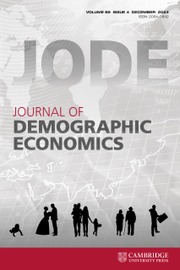No CrossRef data available.
Article contents
Mother's education and early childhood educational care
Published online by Cambridge University Press: 18 February 2025
Abstract
We analyze the impact of extending mandatory education from five to eight years on mothers’ involvement in early childhood educational activities, using data from the Turkish Time Use Survey. The compulsory education reform substantially increased the likelihood of mothers completing at least middle school (eight years of schooling). However, it had no significant effect on mothers’ time spent on early childhood educational activities, such as reading, playing, and talking to children. Instead, the reform increased mothers’ total time with children, particularly through housework and social activities involving children. These findings suggest that studies linking maternal education to greater time investment in childcare may suffer from omitted variable bias, as unobserved factors like maternal intelligence and values influence both educational attainment and childcare behaviors. Our findings are critical given that nearly half of pre-primary-age children globally are not enrolled in formal education and primarily remain in home settings.
Keywords
- Type
- Research Paper
- Information
- Copyright
- Copyright © The Author(s), 2025. Published by Cambridge University Press in association with Université catholique de Louvain
Footnotes
The views and opinions expressed in this article are those of the author Betul Akar and do not necessarily reflect those of the Scientific and Technological Research Council of Turkey. The opinions expressed here belong solely to the author Pelin Akyol and do not reflect the views of e61 Institute or affiliates third parties.


